FLUOROURACIL: How does it fool your cancer cells?
Fluorouracil is used as an anticancer agent. It belongs to a group of chemotherapeutic drugs known as antimetabolites. As its structure suggests, it looks similar to a nucleic acid base Thymine and Uracil, with slight differences in structure. These slight differences in their structure are used as a means of inhibiting the cancer cells’ vital processes such as DNA repair and replication. As a result, cancer cells are not able to grow and multiply, hence, the chances of cancer cells being able to spread all over the body goes down.
How does Fluorouracil look like in Chemistry?

Let’s Get Building!
Using your Student Molecular Set from Duluth Labs let’s create Fluorouracil! You’ll need:
- 4 Carbon atoms
- 2 Oxygen atoms
- 1 Fluorine atom
- 3 Hydrogen atoms
- 2 Nitrogen atoms
- 3 Small Connectors (compact small bonds for hydrogen)
- 6 Medium Connectors
- 6 Long Connectors
- Molecular Tool (for Disassembly)
Put aside all the atoms and connectors needed.
Let’s Start off With Our Carbon 6!
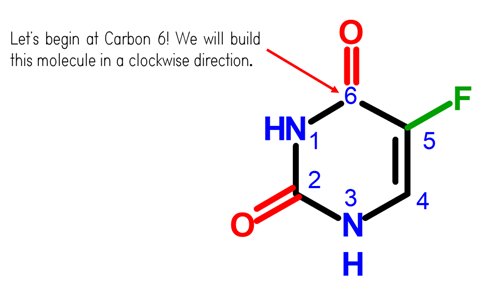
Steps:
-
1

1. Get one Carbon atom (Carbon 6) then, attach an Oxygen atom atom above it using 2 long connectors
-
2

2. Then, get another Carbon atom (Carbon 5) then attach this to the right of Carbon 6 using 1 medium connector.
-
3

3. Attach a fluorine atom to Carbon 5 using a medium connector.
-
4
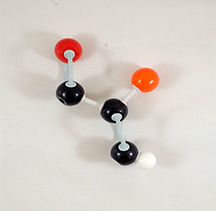
4. Grab another carbon atom (Carbon 4) then attach this below Carbon 5 using 2 long connectors. Then, place a hydrogen atom on Carbon 4 using a small connector
-
5
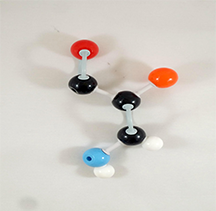
5.Attach a nitrogen atom (Nitrogen 3) to the left of Carbon 4 using 1 medium connector. Add a hydrogen atom to Nitrogen 3 using a small connector
-
6

6. Attach a carbon atom (Carbon 2) to the left of Nitrogen 3 using 1 medium connector.
-
7

7. Get one oxygen atom and attached this to Carbon 2 using a medium connector.
-
8
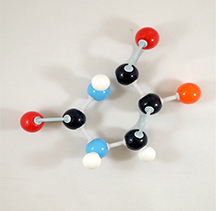
8. Then, attach another nitrogen atom (Nitrogen 1) above Carbon 2 using 1 medium connector. Place 1 hydrogen atom on Nitrogen 1 using a small connector.
-
9
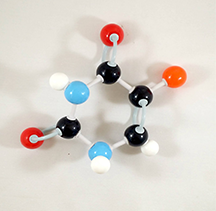
9. Join Nitrogen 1 and Carbon 6 together using 1 medium connector.












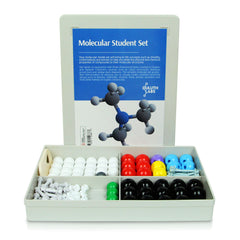
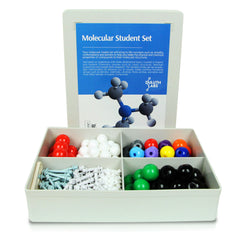

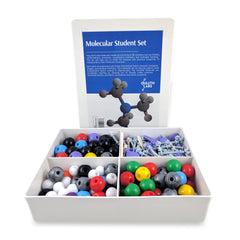
KpwJfoTx
zMgmnOtcNfPuLVC
AjRovkGiwzxyaM
VzYugJOPNxptXsS
mnCYUZIiNFc